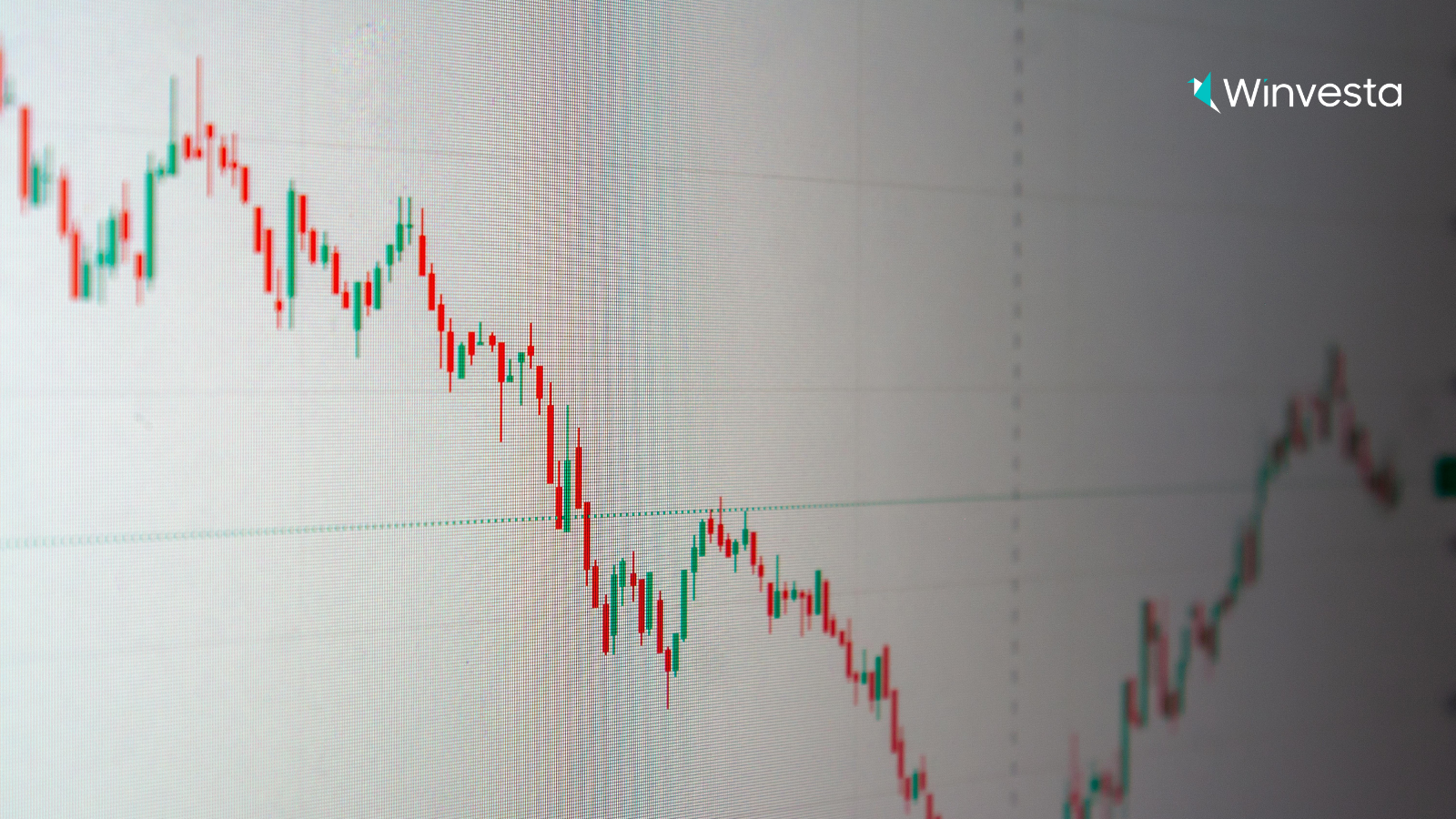Contents
Thematic Investing – What is it & Why Should Investors Care About It?
5 minutes read
17 June 2025

Do you believe electric cars will dominate roads in the next decade? Are you excited about artificial intelligence transforming the way we work? You may think clean energy companies will experience rapid growth as the world battles climate change.
If you share these beliefs but don't know which specific company to invest in, you're not alone. Choosing the right stock within a promising sector can feel overwhelming. This is where thematic investing comes to your rescue.
Understanding thematic investing: A more innovative way to invest in trends
Thematic investing allows you to invest in major trends and opportunities without spending hours researching individual companies. Instead of picking one clean energy stock, you can invest in the entire clean energy theme.
Think of it this way: You believe smartphones will become even more critical in our daily lives. Rather than guessing which phone maker will win, thematic investing allows you to invest in the entire smartphone ecosystem, including manufacturers, chipmakers, app developers, and accessory companies.
This approach solves a common problem. Many investors have great ideas about future trends but lack the time or expertise to build balanced portfolios. Thematic investing bridges this gap by providing ready-made exposure to sectors that align with your beliefs.
How thematic investing works in practice
While thematic investing reduces your research burden, you still need to understand the theme you're investing in. Savvy investors compare the performance and risk of their chosen theme against that of the broader market.
You have two main paths: build your thematic portfolio or choose from existing thematic exchange-traded funds (ETFs).
Building your thematic portfolio: A step-by-step approach
%20(60).png?width=1600&height=900&name=Blog%20images%20(2)%20(60).png)
Step 1: Discover themes that excite you
Start by identifying themes that align with your beliefs or capture emerging trends. You might choose:
- Fintech companies are revolutionising banking
- Robotics and AI firms are automating industries
- Emerging markets with growing economies
- Cybersecurity companies protecting digital assets
The key is selecting themes you understand and believe will grow over time.
Step 2: Research and compare your options
Once you've identified interesting themes, dig deeper into them. Compare different themes against each other and traditional investments, such as the S&P 500.
Pay special attention to volatility - thematic investments often experience bigger price swings than diversified funds. Make sure you can handle this rollercoaster ride.
Step 3: Decide how much to invest in each company
You can weigh your investments based on company size (market capitalisation) or spread your money equally across all companies in your theme. Your risk tolerance should guide this decision.
For example, if you're investing in clean energy, you might put more money in established companies like Tesla and less in smaller, riskier startups.
Step 4: Rebalance regularly to stay on track
Stock prices fluctuate constantly, which can disrupt your original investment strategy. Regular rebalancing ensures that your portfolio continues to match your intended theme exposure.
If one stock in your clean energy theme doubles in value, it might now represent too large a portion of your portfolio. Rebalancing would involve selling some of that stock and buying more of the others.
Using thematic ETFs: The easier alternative
ETFs offer a more straightforward way to invest thematically. These funds do the heavy lifting - they research companies, decide weightings, and rebalance automatically.
For instance, the Vanguard ESG U.S. Stock ETF (ESGV) gives you instant exposure to companies with strong environmental, social, and governance practices. You don't need to research individual companies or worry about rebalancing.
The trade-off? Less control. You can't remove a company you dislike or adjust weightings based on your preferences.
The compelling benefits of thematic investing
More focused exposure than traditional funds
Traditional mutual funds typically hold 50-80 different stocks across various sectors. This diversification reduces risk but also limits potential returns. If the technology sector booms, a diversified fund only captures a small portion of those gains.
Thematic investing flips this approach. By focusing on fewer companies within a specific theme, you capture a greater share of the upside when that theme performs well.
Real-world performance examples
The numbers tell a compelling story. While the S&P 500 gained 15.8% over the past year, the BOTZ ETF (which invests in robotics and AI companies) surged over 45% in the same period. This dramatic difference illustrates the potential of thematic investing when you select the right trends.
Balanced risk through smart diversification
Although thematic investing focuses on specific sectors, it still provides more diversification than buying individual stocks. Investing in a clean energy theme may include companies such as solar panel manufacturers, wind turbine manufacturers, and battery makers, thereby spreading your risk across the entire industry.
You can further reduce risk by investing in multiple asset classes or themes. A portfolio that combines healthcare innovation, financial technology, and renewable energy themes provides broader exposure while maintaining a thematic focus.
Getting started with thematic investments
ETFs remain the most practical way to invest thematically, especially for beginners. Winvesta offers access to over 900 ETFs, spanning a diverse range of themes and categories.
Country-specific options:
- SPY tracks the S&P 500 Index for U.S. exposure
- DAX follows Germany's stock market performance
- EEM provides emerging markets exposure
Sector-specific themes:
- FINX focuses on fintech companies transforming finance
- BOTZ invests in robotics and artificial intelligence firms
- ICLN targets renewable energy companies
- ARKK concentrates on disruptive innovation companies
Industry-specific opportunities:
- XBI covers biotechnology companies
- SOXX focuses on semiconductor manufacturers
- CLOU targets cloud computing companies

Ready to own a piece of the world’s biggest brands?
- Invest in 4,000+ US stocks & ETFs
- Fractional investing
- Zero account opening fees
- Secure and seamless
Start investing in just 2 minutes!

Build your global portfolio.
.png)
Invest in companies you love, like Apple and Tesla.

Track, manage, and grow your investments.
Important considerations before you invest
Higher volatility comes with the territory.
Thematic investments often experience bigger price swings than diversified funds. The same concentration that can boost returns also increases risk. Be prepared for potentially dramatic fluctuations.
Timing matters more than with broad market investing
Since thematic investments focus on specific trends, timing becomes more critical. Investing in blockchain technology at its peak in 2021 would have resulted in significant losses, while early investors saw massive gains.
Trends can change quickly.
The next big thing today might become obsolete tomorrow. Remember how many investors lost money betting on 3D printing companies that failed to deliver on early promises?
Don't put all your eggs in one thematic basket.
While thematic investing can enhance returns, it shouldn't represent your entire portfolio. Most financial advisors recommend limiting thematic investments to 10% to 20% of your total portfolio.
Making thematic investing work for your financial goals
Start small and learn as you go. Choose one or two themes you genuinely understand and believe in. Monitor their performance and gradually expand your thematic exposure as your confidence grows.
Consider your investment timeline, too. Thematic investing is most effective for long-term goals, as short-term volatility can be significant. If you need money within the next few years, stick with more conservative investments.
Remember to review your thematic investments on a regular basis. Trends evolve, and what made sense last year might not make sense today. Stay informed about developments in your chosen themes, and be prepared to adjust your strategy accordingly.
Thematic investing represents a powerful middle ground between selecting individual stocks and investing in broad market funds. It lets you express your beliefs about future trends while maintaining reasonable diversification. With proper research and realistic expectations, thematic investing can become a valuable part of your investment strategy.
Frequently asked questions about thematic investing?

The four main types of investments are:
- Stocks (equity)
- Bonds (fixed income)
- Real estate
- Cash equivalents (like savings accounts or certificates of deposit)

Contributed by Denila Lobo
Denila is a content writer at Winvesta. She crafts clear, concise content on international payments, helping freelancers and businesses easily navigate global financial solutions.



